Miten vähentää varastoja tasapainoisesti
Saatat kysyä itseltäsi: ”Miksi varastojen ja käyttöpääoman vähentäminen on niin tärkeää?” Se on yksinkertaista. Maailmanlaajuisen markkinadynamiikan muuttuessa suurten varastojen ylläpitäminen voi sitoa arvokasta pääomaa, haitata ketteryyttä ja lisätä kustannuksia.
Mutta tässä on juju – vaikka monet yritykset ymmärtävät optimoinnin tärkeyden, ne jäävät jumiin haasteiden verkkoon.
Usein kyse on ulkoisten paineiden, kuten materiaalipulan ja kasvavien logistiikkakustannusten yhdistelmästä. Joskus se on kuitenkin sisäistä: selkeän strategian puute, toimitusketjun vääränlainen jalanjälki tai jopa epäröivä johto. Näiden esteiden tunnistaminen on ensimmäinen askel.
Tässä artikkelissa tarkastelemme tarkemmin, miten voit pienentää varastoa palvelutasosta tinkimättä. Käyttämällä PERITO IBP:tä, Roiman kehittynyttä integroitua liiketoimintasuunnitteluratkaisua, voit vastata näihin haasteisiin tehokkaasti ja strategisesti.
6 tyypillistä toimitusketjutilannetta ja miten niitä käsitellään
Tilanne 1: Navigointi ulkoisten paineiden kanssa
Olet kokenut merkittävää kasvua, ja vaikka se on kiitettävää, se on tuonut mukanaan myös materiaalipulaa, haasteita rahtiliikenteeseen ja logistiikkaan sekä vaihtelevia raaka-ainehintoja.
Yhtäkkiä varastosi paisuvat, kustannukset kasvavat ja kaipaat parempaa ja vähemmän stressaavaa tasapainoa.
Aloita uudelleenarvioimalla toimitusketjusi perusta. On aika hienosäätää varastostrategiat vastaamaan nykyistä tilannetta, jotta sinulla on vähemmän tulipaloja sammutettavana ja voit keskittyä enemmän toimitusketjun sujuvaan pyörittämiseen.
Tilanne 2: Myynnin laskusuhdanteisiin puuttuminen
Se on kova pala niellä, mutta myynti on laskussa. Sen sijaan, että turvaudut paniikkiin, tämä on tilaisuus uudelleenkalibrointiin.
Kohdista toimitusketju uudelleen nykyisen kysynnän mukaan, harkitse ylimääräisten varastojen strategista purkamista ja paranna myyntiennusteita - vaikka se tarkoittaisi odotusten alentamista. Sopeutumiskyky ja reagointikyky auttavat lieventämään vaikutuksia.
Tilanne 3: Toimitusketjun jalanjäljen uudelleensuuntaaminen
Kun toimitusketjusi jalanjälki ei vastaa kysyntää, tehottomuutta syntyy.
Ratkaisu löytyy perusteellisesta analyysistä. Yritä määrittää, missä kysyntä on vahvaa, ja siirrä toimintojasi sen mukaisesti, ja vaikka tämä on helpommin sanottu kuin tehty, kun onnistut siinä, se takaa paljon harmonisemman tarjonnan, kysynnän ja varastoinnin tasapainon.
Tilanne 4: Hallinnan palauttaminen kaaoksessa
Laiva ilman kapteenia ei voi muuta kuin ajelehtia päämäärättömästi. Samoin toimitusketjun hallinnan puute voi johtaa varastojen huonoon hallintaan.
Ainoa ratkaisu on ottaa kontrolli takaisin. Hallinnan palauttaminen vaatii paljon vaivaa ja kovaa työtä, mutta vankkojen varastonhallintajärjestelmien käyttöönotto, määriteltyjen protokollien laatiminen ja tiimin kouluttaminen vievät voiton. Kun saat hallinnan takaisin, saat järjestyksen ja tarkkuuden toimintoihisi.
Tilanne 5: Strategia-aukon umpeen kurominen
Runsas varasto ei aina tarkoita tehokkuutta, varsinkaan jos varasto on vääränlaista. Tämä epäsuhta johtuu usein myynti- ja varastointistrategioiden välisestä yhteyden puutteesta. Kompromissi on tie eteenpäin.
Strategia-aukon kuromiseksi umpeen keskity uudelleen strategisiin asiakkaisiin, ymmärrä heidän tarpeensa ja priorisoi korkean palvelutason tuotteet. Tämä harjoitus jämähtää usein nätteihin PowerPointeihin, joten sinun tehtäväsi on saada uusi strategia elämään toimitusketjun suunnitteluorganisaatiossa teknisin ja konkreettisin termein sekä rinnallasi työskentelevissä ihmisissä – mikä vie meidät viimeiseen tilanteeseen.
Tilanne 6: Suunnittelun virtaviivaistaminen ja tuen saaminen
Palvelutasojen asettaminen on yksi asia, mutta epäjohdonmukainen toteutus ja johdon tuen puute voivat pilata parhaatkin suunnitelmat.
Tilanne on epävarma, mutta ei mahdoton. Kokoa tiimisi, kerää johdon tuki ja panosta suunnittelukäyttäytymisen hiomiseen. Yhdenmukaisuuden varmistaminen kautta linjan tasoittaa tietä yhtenäisemmälle ja tehokkaammalle toimitusketjulle.
Muista, että vaikka nämä tilanteet voivat olla pelottavia, niiden tunnistaminen ja ymmärtäminen on jo puolet taistelusta. Maaginen edistysaskel tapahtuu, kun likaat kätesi seuraavassa osiossa.
Vasta kun olet sukeltanut syvään päähän, analysoinut kaikki osa-alueet ja saanut 360 asteen näkymän, olet parhaassa asemassa tekemään tietoon perustuvia strategisia päätöksiä.
Miten pääset alkuun varastojen ja käyttöpääoman optimoinnissa?
Jos haluat päästä alkuun varaston ja käyttöpääoman optimoinnissa, suosittelemme noudattamaan neljää erillistä vaihetta. Vaikka nämä neljä vaihetta kuulostavat yksinkertaisilta, niiden toteuttaminen on toinen juttu.
Vaihe 1: Tutustu syvällisesti yrityksesi nykytilaan
Tutustu ensin kattavasti yrityksesi. Yrityksesi toiminnan yksityiskohtiin syventyminen on optimoinnin perusvaihe.
Ymmärrä dynamiikka, sisäiset työnkulut ja ulkoiset paineet, jotka vaikuttavat varastonhallintaasi.
Oletko täysin tietoinen liiketoimintasi rytmistä?
Oletko kartoittanut ruuhkahuiput, havainnut vaihtelevat tuotekysynnät ja ymmärtänyt sidosryhmien keskeiset odotukset?
Vasta kun olet tämän syväanalyysin ja saanut 360 asteen näkymän, sinulla on parhaat edellytykset tehdä tietoon perustuvia strategisia päätöksiä.
Vaihe 2: Paikanna ja poista sisäiset esteet
Transformaatiossa ei ole kyse vain kunnianhimosta, vaan myös itsetutkiskelusta. Jokaisessa organisaatiossa on sisäisiä esteitä, jotka voivat estää edistymistä.
Onko organisaatiossasi osastoja, jotka vastustavat muutosta ja epäröivät siirtyä pois omalta mukavuusalueeltaan?
Onko olemassa siiloja, jotka estävät saumattoman viestinnän ja tiedonkulun?
Kun otat aikaa näiden haasteiden tunnistamiseen ja puutut niihin suoraan, raivaat tietä todelliselle muutokselle.
On tärkeää murtaa nämä muurit, luoda avoimia viestintäkanavia ja varmistaa, että kaikki tasot ovat linjassa keskenään. Vain kuromalla umpeen aukkoja voit luoda yhtenäisen ja tehokkaan operatiivisen virtauksen, joka saa kaikkien sidosryhmien tuen organisaatiossasi ja toimitusketjun suunnittelutiimissäsi.
Vaihe 3: Oikean tuen varmistaminen
Muutoksen omaksuminen, erityisesti niin merkittävän muutoksen kuin varastonhallinnan uudistaminen, vaatii vahvaa tukea ylimmältä johdolta. Tämän tuen saaminen ei ole pelkästään liiketoimintasuunnitelman esittämistä; se tarkoittaa, että suunnitelman on oltava vakuuttava, todisteisiin perustuva ja tulevaisuuteen suuntautuva.
Kun päätät siirtyä eteenpäin, varmista, että liiketoimintasuunnitelmasi on valmis. Korosta virtaviivaistetun varastonhallinnan pitkän aikavälin hyötyjä, mahdollisia kustannussäästöjä ja strategisia etuja. Kerro avoimesti haasteista, mutta ole myös optimistinen mahdollisuuksien suhteen.
Kun sitoutuminen on tällä tasolla, tavoitteesi ylittävät väliaikaiset mukautukset. Luodaan syvällisempi, transformatiivinen muutos, joka hyödyttää organisaatiota.
Vaihe 4: Seuraa, sopeudu ja jatka
Tasapainotettuun inventaarioon siirtyminen ei tarkoita, että olet suoralla ja erehtymättömällä tiellä. Päinvastoin. Odota mutkia ja käänteitä, satunnaisia tiesulkuja ja odottamattomia haasteita.
Sitoutuminen prosessiin, väsymätön pyrkimys seurata tuloksia, analysoida tuloksia, muokata strategioita tarpeen mukaan ja kyky pitää tiimisi linjassa keskenään ratkaisevat aina onnistumisen.
Hyväksy ketteryys, ole avoin kurssikorjauksille ja osoita järkkymätöntä sinnikkyyttä, kun kohtaat takaiskuja. Näin varmistat virtaviivaisen toimitusketjun ja luot pohjan yritykselle, joka on joustava, mukautuva ja pitkän aikavälin kasvuun valmistautunut.
Yhteenveto
Varastot ja käyttöpääoma ovat ratkaisevan tärkeitä minkä tahansa yrityksen menestyksen kannalta. Toimitusketjun skenaariot, olivatpa ne sitten ulkoisten tekijöiden tai sisäisen dynamiikan aiheuttamia, voivat vaikuttaa toimintaan merkittävästi. PERITO IBP:n avulla tarjoamme tehokkaan työkalun näihin haasteisiin vastaamiseen, varastojen optimointiin ja käyttöpääoman vapauttamiseen.
Jokainen tilanne edellyttää ainutlaatuista, räätälöityä lähestymistapaa. Jaetut oivallukset yhdistettynä PERITO IBP:n ominaisuuksiin tarjoavat vankan perustan merkityksellisen muutoksen käynnistämiselle – alkaen itsetutkiskelusta, organisaation tuen rakentamisesta ja sitoutumisesta jatkuvaan parantamiseen.
Vaikka matka voi olla haastava, mahdolliset palkinnot tehokkuuden, joustavuuden ja kannattavuuden suhteen ovat vaivan arvoisia. Oletko valmis muuttamaan toimintojasi? Ota meihin yhteyttä, niin kerromme miten PERITO IBP voi auttaa optimoimaan varaston- ja toimitusketjunhallintasi.
-
Perito
PERITO IBP
Additional text for product card: Kokonaisvaltainen toimitusketjun suunnitteluratkaisu.













